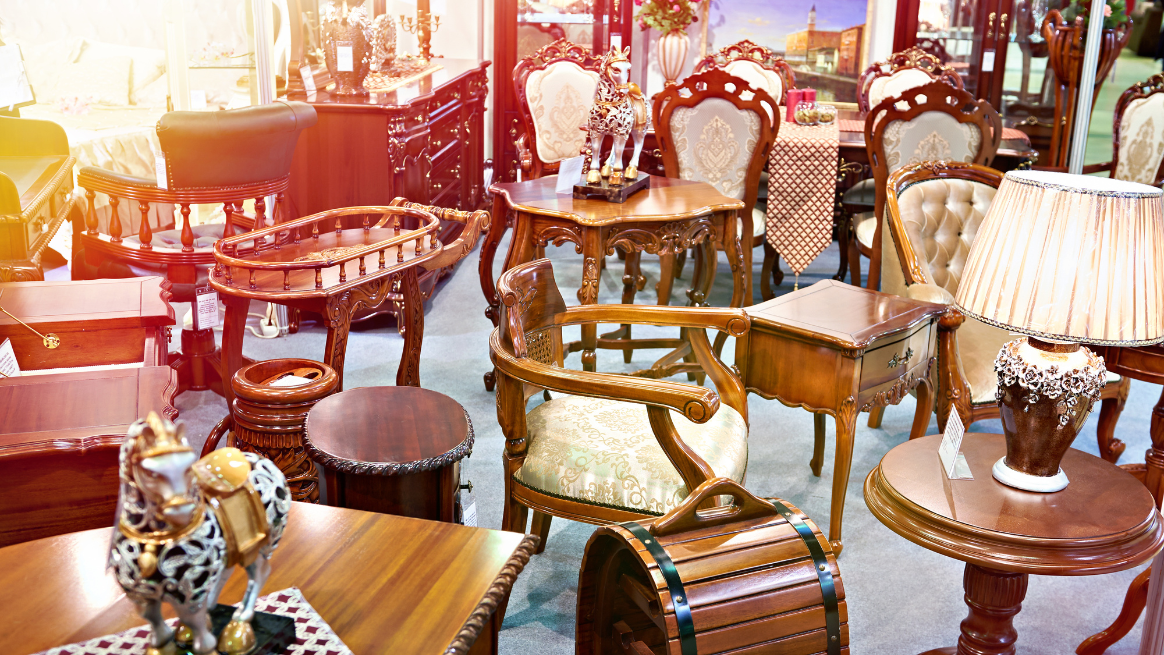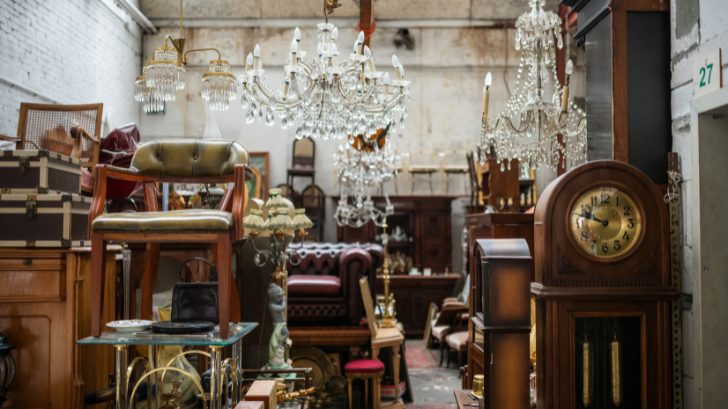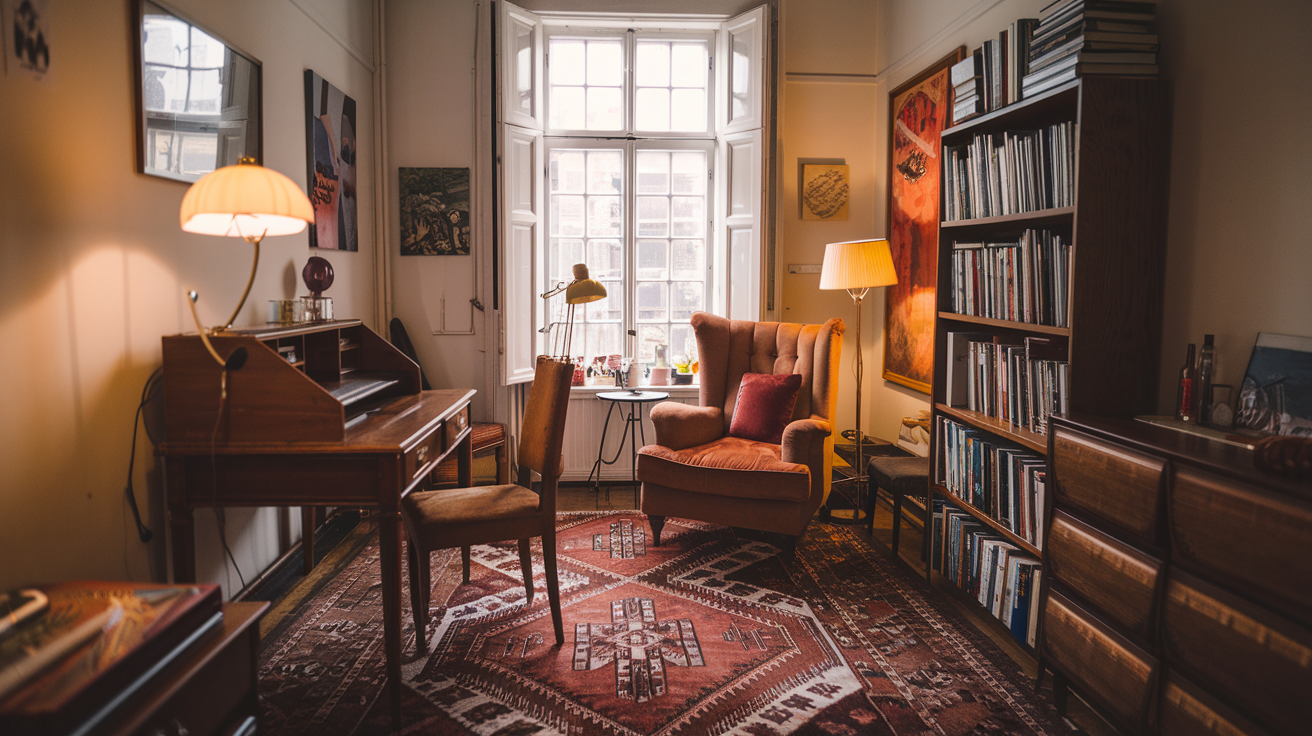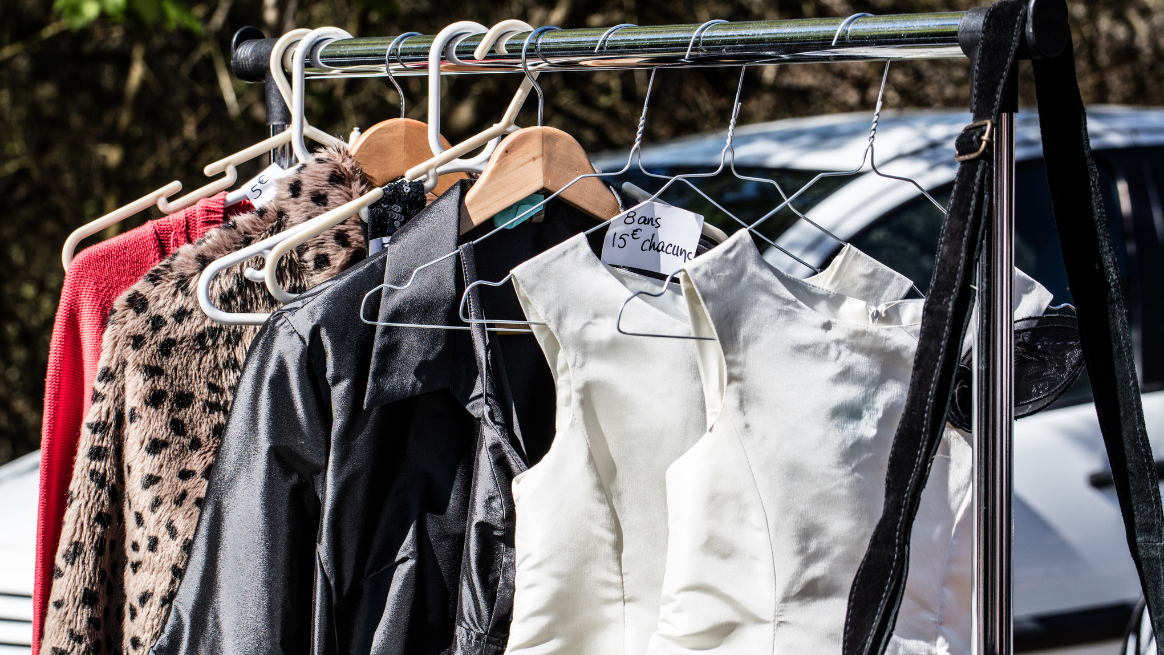

Welcome aboard! Ever thought about making money while expressing your creativity? Flipping furniture for profit might just be the thing for you. This guide will take you on a journey, from hunting bargain furniture to selling your art piece for a profit. Let’s roll up our sleeves and dive in!
Understanding the Concept of Flipping Furniture for Profit
So what’s furniture flipping all about? It’s the act of buying furniture at a low price, giving it a creative facelift, and selling it at a profit. Sounds simple, right? But before you grab your paintbrush, let’s delve deeper into the nitty-gritty details of this art.
Why Choose Furniture Flipping?
Why flip furniture when there are other business opportunities out there? Well, first off, flipping furniture for profit allows you to unleash your creativity and make money doing what you love. Secondly, it’s a sustainable business model, promoting recycling and reducing waste. And finally, it offers you the freedom and flexibility to work at your own pace.
Sourcing Furniture


An integral part of flipping furniture for profit is finding the right pieces to transform. To get the best out of your business, consider the following sources for your next diamond in the rough.
Thrift Stores: The Treasure Troves
Thrift stores are renowned for their hidden gems and unexpected finds. They often sell second-hand furniture at bargain prices, providing a fantastic source for your furniture flipping business. Regular visits and building friendly relationships with the staff can give you an edge in finding the best pieces. You may even get insider information about upcoming stock!
Garage Sales: Your Weekend Adventures
Don’t underestimate the potential of a good old-fashioned garage sale. These neighborhood events can be gold mines of used furniture, often at incredibly low prices. The main reason? Sellers are usually more interested in getting rid of clutter than making a profit. Keep an eye out for local listings, and be prepared to start your hunt early – the early bird catches the worm, after all!
Estate Sales: The Underutilized Source
Estate sales can be another fantastic source of quality furniture at discounted prices. Typically, these sales occur when a person passes away or is moving and needs to sell their belongings quickly. As a result, you can often find high-quality pieces at a fraction of their original cost.
Online Marketplaces: The Digital Hunting Grounds
In the digital age, online platforms like Craigslist, Facebook Marketplace, and even eBay can be excellent sources of cheap, quality furniture. People often list furniture they want to dispose of quickly, which can lead to great deals. However, be sure to check the condition of the pieces and ask for additional photos if necessary. It’s also helpful to turn on notifications for new listings so you can swoop in on good deals.
Auctions: A High-Reward Gamble
Auctions, both online and offline, are also great places to source furniture. While it may require a larger initial investment compared to other sources, the payoff can be substantial. Keep in mind that auctions can be competitive, so come prepared with a maximum bid in mind to avoid overspending.
Flea Markets: An Adventurous Outing
Flea markets are like giant garage sales with various vendors. These markets often house a vast array of items, including antique and vintage furniture. Visiting flea markets can be a fun outing where you can browse through unique pieces and negotiate prices directly with sellers. It’s an adventure in itself!
Choosing the Right Furniture


Selecting the right pieces is pivotal to flipping furniture for profit. Here are some tips to ensure your selection process is fruitful and worth the effort.
Solid Wood Furniture: The Gold Standard
When it comes to flipping furniture, nothing beats the charm and durability of solid wood. They stand the test of time and can be easily repaired, repainted, or refinished. They’re also perennially popular among buyers, making them a safe bet for a healthy profit.
Check for Damage: The Devil’s in the Details
Look closely at each piece for signs of damage. Minor scratches or dents are manageable as they can be fixed or cleverly concealed during the refurbishing process. However, steer clear of pieces with extensive damage like broken legs or deep cracks, as the repair cost and time might outweigh the profit potential.
Practicality and Functionality: Form Follows Function
While aesthetics are important, never ignore the practical aspect of furniture. Look for pieces that serve a purpose and offer functionality. Storage furniture like chests of drawers, cabinets, or coffee tables with compartments are typically in high demand due to their dual functionality.
Versatility: Appeal to a Wider Audience
Consider the versatility of the furniture piece. Furniture that can be used in multiple ways or in various rooms tends to sell better. For instance, a small table could serve as a nightstand in a bedroom, an end table in a living room, or an accent piece in a hallway.
Market Trends: Keeping Up with the Joneses
Stay updated with the latest furniture trends. What are people buying? Is mid-century modern still in, or are people leaning towards rustic farmhouse style? Understanding what’s in demand will help you choose pieces that are more likely to sell.
Unique Pieces: The One-of-a-kind Charm
On occasion, look out for unique or quirky pieces. These might not appeal to everyone, but they could catch the eye of collectors or buyers who love unique and eccentric furniture. These pieces can often be sold for a higher price due to their rarity and charm.
In essence, choosing the right furniture to flip involves a mix of practicality, market understanding, and a keen eye for potential. With these tips in mind, you’re well on your way to finding pieces that will turn a good profit and leave your buyers thrilled with their unique new addition.
Refurbishing Furniture: The Creative Process


The core of flipping furniture for profit lies in the transformation process. This is where your creativity and skills come into play. Here’s a detailed look into the refurbishing process.
Preparation: The Foundation of Success
Every successful transformation begins with thorough preparation. This involves cleaning the piece meticulously and making any necessary repairs. Once the piece is clean, use sandpaper to smooth out any rough patches, as this ensures your paint or finish adheres properly. Remember, a smooth surface is essential for a high-quality finish.
Choosing the Right Paint: A World of Colors
Selecting the right paint is crucial to your refurbishing process. Latex or chalk paint is often favored for furniture due to their ease of use and durable finish. When choosing the color, consider the style of the piece, the current trends, and the potential settings it could be placed in.
Application Techniques: More Than Just Brush Strokes
The way you apply the paint can greatly impact the end result. Consider different techniques such as distressing, stenciling, or color blocking to give the piece a unique look. Be creative, but also keep in mind the potential buyer’s taste.
Adding New Hardware: Small Changes, Big Impact
Changing hardware such as knobs and handles can make a huge difference in transforming a piece. Go for hardware that complements the style and color of the furniture. Antique bronze, brushed nickel, or ceramic knobs can instantly elevate the look of your piece.
Sealing the Deal: The Finishing Touch
Once the paint is dry, it’s time to seal your masterpiece. This can be achieved by using wax or a clear sealant. This step not only protects the paint but also gives the piece a professional finish.
Quality Check: Ensuring Perfection
Before putting up the piece for sale, do a thorough quality check. Ensure the paint is evenly applied, the hardware is secure, and there are no missed spots or defects. Remember, your reputation as a furniture flipper depends on the quality of your work.
The process of refurbishing furniture might seem daunting, but it’s also the most rewarding part. As you progress in your furniture flipping journey, you’ll find your own rhythm and style in this creative process. So, let your creativity loose and bring life back to those old pieces!
Selling Your Creations: Show Me the Money


Once your masterpiece is ready, the next step is to get it in front of potential buyers. Here’s how to navigate the exciting world of selling your flipped furniture.
Online Marketplaces: The Wider Audience
Sites like eBay, Etsy, and Facebook Marketplace are perfect for selling refurbished furniture. They offer a wide reach and a user-friendly platform. Just make sure to take good quality pictures and write compelling descriptions to attract buyers.
Local Sales: Community Counts
Don’t underestimate the power of local sales. Flea markets, consignment stores, and even neighborhood garage sales can be excellent selling avenues. Plus, selling locally eliminates the hassle of shipping, making transactions more straightforward for both you and the buyer.
Craft Fairs and Antique Shows: Showcasing Your Talent
Craft fairs and antique shows are fantastic platforms to sell your flipped furniture, especially if your pieces have a vintage or unique twist. These events attract individuals who appreciate handcrafted and one-of-a-kind items, often willing to pay a premium for such pieces.
Social Media Platforms: The Power of Visibility
Social media platforms like Instagram and Pinterest are excellent tools for selling your refurbished furniture. Post before and after pictures to showcase the transformation. Use appropriate hashtags to reach a wider audience. You could even create a dedicated page for your business to build a following.
Own Website: The Professional Approach
Consider setting up your own website to sell your furniture. This not only gives you full control over your online presence but also adds a touch of professionalism to your business. Additionally, having a website allows you to share more about your process, story, and connect with customers on a personal level.
Partnering with Local Businesses: Team Effort
Consider partnering with local businesses such as cafes, restaurants, or boutiques that align with your style. They might be interested in featuring your pieces in their spaces for sale or commission. This partnership not only gives your furniture exposure but also helps support other local businesses.
Choosing the right sales channels can significantly impact your profitability and business growth. Each platform has its unique advantages, so don’t limit yourself to just one. Experiment with different avenues, and over time, you’ll find what works best for your furniture flipping business.
Scaling Your Furniture Flipping Business


Once you’ve mastered the art of flipping furniture for profit, you might be thinking about how to grow and scale your business. Here are some strategies to take your furniture flipping venture to the next level.
Networking: It’s Who You Know
Networking can play a crucial role in scaling your business. Attend industry trade shows, join local business groups, and participate in online forums related to furniture flipping. These connections can lead to opportunities, partnerships, and valuable advice that could be instrumental in growing your business.
Building a Brand: Identity Matters
Establishing a strong brand can help distinguish your business from competitors. Think about what makes your furniture unique – is it the style, the quality, or perhaps your eco-friendly approach? Use this unique selling proposition (USP) to develop a brand that resonates with your target audience.
Expanding Your Product Range: Variety is the Spice of Life
To grow your business, consider diversifying your offerings. This could mean venturing into refurbishing different types of furniture or offering custom refurbishing services. The more you can offer, the broader your potential customer base becomes.
Investing in Marketing: Spread the Word
Investing in marketing is key to attracting new customers and scaling your business. This could involve social media advertising, search engine optimization (SEO) for your website, or even old-fashioned flyer distribution in your local area. The goal is to get your furniture in front of as many potential customers as possible.
Hiring Help: Delegation for Growth
As your business grows, you might find yourself stretched thin. This is when hiring help can be beneficial. Whether it’s a part-time assistant to help with the heavy lifting or a digital marketing expert to manage your online presence, delegating tasks allows you to focus on what you do best – creating beautiful pieces of furniture.
Educational Workshops: Sharing the Knowledge
Consider hosting workshops to share your knowledge about furniture flipping. This not only positions you as an expert in your field but also opens up an additional revenue stream. Plus, you’ll be helping others discover the joy of furniture flipping!
Scaling a business requires a strategic approach and a willingness to adapt and evolve. By implementing these strategies, you can turn your passion for flipping furniture into a profitable and sustainable business. Remember, every big business started small. With persistence and creativity, there’s no limit to what your furniture flipping business can achieve.
FAQs
Q: How much can I make flipping furniture for profit? A: The profits can vary widely based on factors such as the type of furniture, the amount of work needed, and the selling price. But with the right skills and effort, it’s possible to earn a significant income from this business.
Q: Is flipping furniture a full-time job? A: It can be both a full-time job or a side hustle, depending on the time and effort you’re willing to put in. Some people start flipping furniture as a hobby and then transition to doing it full-time.
Q: Do I need special skills to start flipping furniture? A: While having carpentry or painting skills can be a plus, they’re not essential. There are plenty of resources online that can help you learn the necessary skills.
Q: Where can I sell my flipped furniture? A: There are numerous online marketplaces like eBay, Etsy, and Facebook Marketplace. Additionally, local avenues like flea markets and garage sales are also good options.
Q: Do I need a license to start flipping furniture for profit? A: Depending on your local laws, you might need a business license. It’s best to check with your local government or a business adviser.
Q: What types of furniture are best for flipping? A: Solid wood furniture is generally the best for flipping due to its durability and high demand. But ultimately, the choice depends on your skills, the potential profit, and the market demand.
Conclusion
So there you have it! A comprehensive guide to flipping furniture for profit. It might seem a bit overwhelming at first, but remember, every master was once a beginner. With a bit of creativity, a whole lot of passion, and a dash of business acumen, you’re well on your way to building a profitable furniture flipping business. Happy flipping!









































































